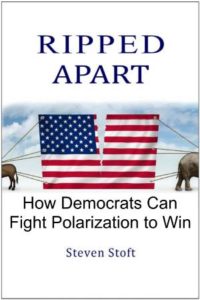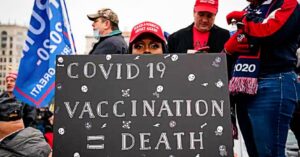The only way for prejudiced people to change is for them to decide for themselves that all human beings should be treated fairly. We can’t force them to think that way.
—Rosa Parks, 1997
Initiated the 1955 Montgomery bus boycott
“The invisibility of microaggressions may be more harmful to people of color than hate crimes or the overt and deliberate acts of White supremacists such as the Klan.” So claims Dr. Derald Wing Sue, the leading “expert” on microaggressions. Yes, he claims that a microaggression—that’s micro as in microscopic—can be “more harmful” than a hate crime, which the Department of Justice says is “often a violent crime, such as assault, murder, arson or vandalism.” To drive this home, he mentions the Ku Klux Klan.
Of course, microaggressions are real, and in areas of prejudice, they often follow systematic patterns that are much more harmful than single incidents. But as Sue admits, they are so small it is often impossible to even be sure they happened. This is no excuse for ignoring them. Instead, the point of this chapter is that Dr. Sue’s solution just makes race relations worse.
Dr. Sue popularized “microaggressions,” which he described as subtle “slights and insults” in a 2007 paper that provided a list of 51 examples that the president of the University of California distributed to its 10 campuses with a quarter-million students. Unfortunately, Sue’s paper provides no evidence for his list.
“America is the land of opportunity.” That’s one possible microaggression listed by U.C. But this claim was checked by a Cato Institute/YouGov survey in 2017, which found that 93% of Blacks and 89% of Latinos did not find this assertion offensive, let alone “more harmful” than a Ku Klux Klan hate crime.
They’re Invisible
Sue believes that “microaggressions hold their power because they are invisible,” but offers no evidence of power due to invisibility. Generously, he says microaggressions are committed by “well-intentioned White folks who are unaware.” (People of color cannot commit them.)
The belief that invisible “slights and insults” may be more harmful than “hate crimes” is polarizing. Microaggression accusations usually follow Sue’s analysis of racism and target “White liberals.” The right-wing press plays this up because polarization is their mission. Their message seems to be, “If the radical left is attacking liberals as racist, think how they would treat us.” This may help explain why 71% of Republicans view Democrats as moderately to extremely racist.
Dr. Sue and the ‘Racist’ Flight Attendant
The toxicity of microaggression theory is confirmed by Sue’s own story of what happened when he applied his own theories to a possible microaggression aimed at him. By all indications, he should be the one person in the country most capable of using microaggression theory to reduce racism and soften the blow to the victim. Here’s what happened.
Sue, an Asian American, has a Ph.D. in counseling psychology, and by the time he wrote his landmark paper, he was the country’s leading expert on how to handle microaggressions. His 2007 paper provides only this one example of how his microaggression theory works in practice.
Sue and a Black colleague were asked to move to the back of a small plane “to distribute weight on the plane evenly.” Three White men seated in front of them were not asked to move. There were no other passengers.
Sue could feel his “blood pressure rising” and his “face flush with anger,” and he asked the flight attendant, “Did you know that you asked two passengers of color to step to the rear of the ‘bus’”? The flight attendant correctly perceived this as an accusation of racism (because Sue said “bus,” not “plane”) and indignantly denied it.
I’m no psychologist but accusing someone of being a racist is not the best way to start a productive conversation, especially when, as he later concluded, the flight attendant was well-intentioned. In fact, I would call Sue’s opening remark more than a microaggression, as it was made in anger and was certainly not “invisible” to either of them. It was just a normal-size, nasty, verbal aggression, which Dr. Sue seems to find acceptable since he never acknowledges it.
He persisted in trying to get her to recognize her racism, but as he explains, “For every allegation I made, she seemed to have a rational reason for her actions. Finally, she broke off the conversation and refused to talk about the incident any longer. … For the rest of the flight, I stewed over the incident.” So he definitely didn’t help the victim (himself) feel any better.
The flight attendant’s view? Now let’s try to see this from the flight attendant’s perspective. Something Dr. Sue never attempts, perhaps because he defines microaggressions to be actions that can only be “perpetrated” by Whites.
In spite of his anger, Sue was eventually “convinced that she was sincere in her belief that she had acted in good faith without racial bias.” Nonetheless, he is sure that her “actions and their meaning were invisible to her.” He’s saying she could not understand her own actions or what they meant, but he could. It is entirely possible that Dr. Sue is correct. But …
Sue notes that “balancing the weight on the plane seemed reasonable.” Quite likely it was more than reasonable. The FAA’s Weight and Balance Handbook indicates that the flight attendant may have had more on her mind than Sue realized. It’s crucial “that the center of gravity is slightly ahead of the center of lift.”
Had the flight attendant moved the three White men to the back of the plane, that would have shifted the center of gravity even more toward the back than moving Sue and his colleague. According to the FAA, having the center of gravity too far back makes “the airplane unstable and difficult (or even impossible) to recover from a stall,” which means the flight ends somewhat ahead of schedule and not likely at an airport. That could be even worse than a microaggression.
Had the flight attendant considered the situation in her own microaggression terms, she might have thought, This privileged male college professor thinks he can read my mind, but he’s just ‘mansplaining’ and has no idea what I’m dealing with. Plus he has the chutzpah to suggest that I’m racist.
Conclusions? What we know for sure is that Sue was very unhappy with the outcome. Surely the flight attendant was too. On top of that, both parties probably ended up thinking worse of the other race. And this is in fact what has happened in every microaggression encounter that I’ve read about.
So this is how it turns out when the country’s leading expert in fixing microaggressions tries to solve the problem using his own theories. Dr. Sue apparently considers this outcome normal since he used this as his main example for years.
Microaggression Theory
As mentioned, Dr. Sue believes that “microaggressions hold their power because they are invisible.” But would Sue have felt better if the flight attendant visibly discriminated against him, and they both knew it? Sue never considers that question. Possibly because an honest answer would contradict his theory.
If someone is well-intentioned and unknowingly says something that offends you, it may be best not to get angry but to explain politely why it upsets you. Generally, a well-intentioned person will be embarrassed by their mistake and do their best to avoid it in the future.
If Daryl Davis could win over dozens of Klansmen, surely Derald Sue should have been able to successfully deal with one well-intentioned flight attendant.
Because microaggressions, such as “You are so articulate,” cannot be verified as aggressions by the recipient and are invisible to the “perpetrator,” they are an open invitation to acrimony. The supposed “perpetrator,” being unable to see what’s wrong, will likely view the “victim” as inventing a crime.
This doesn’t mean there’s no problem. It just means that vigilante-style prosecution of invisible crimes is not the way to solve the problem.
In a later chapter, we will see that Sue’s paper mentions that microaggression is based, in part, on “critical race theory.” The first two contributors to that theory that he lists are a French philosopher who doesn’t believe in truth and the founder of the Italian Communist Party. Perhaps we should not be surprised that Sue’s theory seems rather odd.
The Stereotype Threat to Black Students
Fortunately, there are many other approaches to dealing with racism and its lingering effects. After a little online searching, here are a few experiments I found interesting. Surely there are even better ones that I did not discover in my brief quest. My point is only that solid, innovative research is being pushed aside by ideological claptrap derived from the likes of Jacques Derrida, a postmodern charlatan, and Antonio Gramsci, a 1920s Italian neo-Marxist, whom we will soon meet.
Stereotype threat means being at risk of confirming a negative stereotype about one’s group. It’s like being on a team that’s viewed as a bunch of losers and not wanting to mess up because that would help confirm the negative stereotype of you and your teammates. Of course, this threat is mainly felt when you’re under pressure to perform—for example, on a final exam.
There is a lot of evidence (although there’s still some doubt) that this stereotype threat damages Black academic performance. There is also evidence of the same problem for women and their performance on difficult math tests. Here’s one of the many pieces of evidence.
Black and White college students were given a difficult verbal test in an experimental setting. For some participants, both Black and White, it was described as “diagnostic of intellectual ability.” This was expected to produce a stereotype threat for the back students who would worry about performing well as representatives of their race. Other participants, both Black and White, were told the test was simply “a laboratory problem-solving task that was nondiagnostic of ability” in order to reduce any stereotype threat. The same test was given in all cases. With the stereotype-threat description, Whites outperform Blacks, but with the threat-reducing description, Blacks and Whites performed equally well.
Compared to microaggression theory, this result points to a workable approach to making things a little better. There are many reasons for the negative academic stereotypes of Blacks. Some are microaggressions, and all trace back to White prejudice. Tracking down all the aggressions, the microaggressions and the self-doubt now built into the Black community is hopeless. Fixing them all individually is even harder.
It makes more sense to focus on finding the most effective ways to counteract and repair the damage. This will have the benefit of helping to break the vicious cycle. Success will tend to breed more success. Self-confirming approaches have led to dramatic changes in sports, television, movies, and politics, as has happened since the civil rights movement.
There are many ways out of the stereotype threat. But undoubtedly the best ones have not yet been found, and few have been implemented. To show something of the breadth of possibilities, here’s another interesting experiment.
Four groups of students (two White groups and two Black groups) were assigned to write letters to disadvantaged kids who lived far away to encourage them in their educational pursuits. But two groups, one Black and one White, were instructed to use a special argument and were provided with evidence to support the theory that minds can grow and develop—that you can actually increase your intellectual ability.
The experiment had little effect on three groups. But for the Black students using the special argument, the effect was dramatic. They became happier with their own studies, and at the end of the semester, their grades were dramatically higher.
This result did not surprise the experimenters because they had designed the special argument to indirectly relieve some of the effects of the negative academic stereotype. It worked. Having Black students argue the case themselves was the best way to convince them they could increase their intellectual abilities.
And one more example. A number of studies have found that one of the strongest predictors of college GPA for African-American students is the number of White friends they have. That’s after taking into account the obvious confounding factors. One theory is that such connections tend to contradict the negative stereotype and thereby lessen its impact. It seems that a deliberate effort in this direction might well succeed.
Conclusion
By stereotyping “liberal Whites” as the common enemy, Sue drives a wedge between people of color and many who would be their best allies inside the dominant culture. Historically, such allies have always been helpful—if not essential—for progress. Just think back on the decades-long abolitionist and anti-slavery movements that led up to the Civil War. Think of the hundreds of thousands of northern Whites who died fighting against slavery. Think of the White Freedom Riders of the 1960s. Think of JFK and LBJ.
No, allies are not perfect. But as we will see shortly, the upper-class, White, male neo-Marxists and postmodernists who are the fathers of Sue’s “critical race theory” are far less trustworthy than the “well-meaning White folks” who Sue claims are perpetrators of “invisible” microaggressions that can be worse than hate crimes.

 Ripped Apart
Ripped Apart

